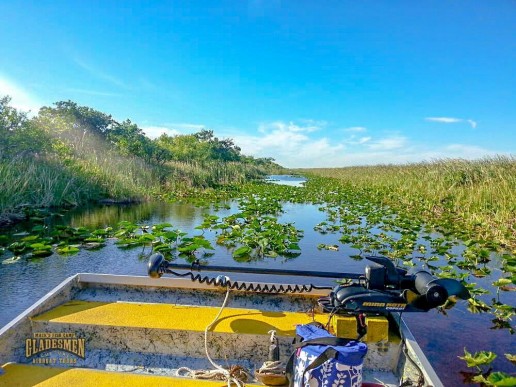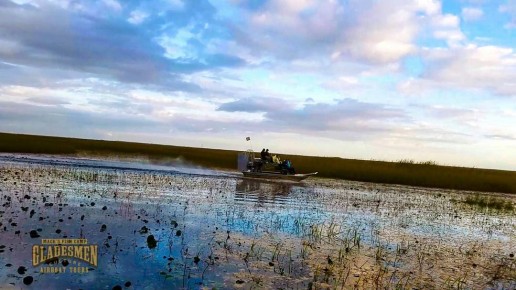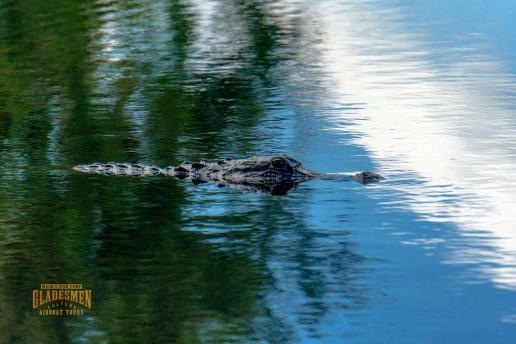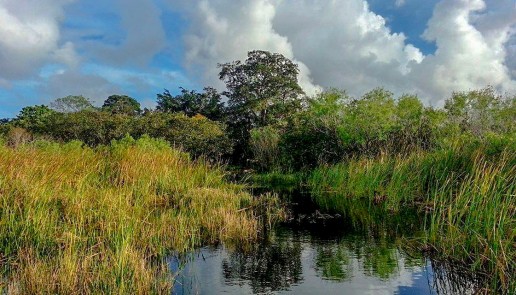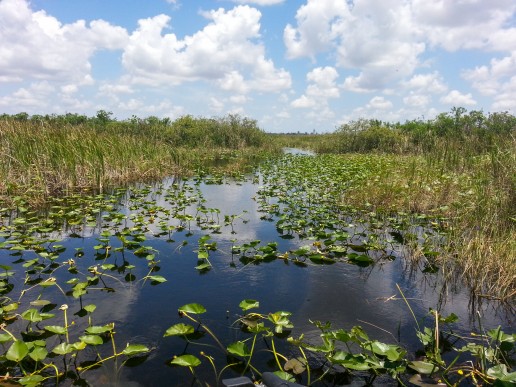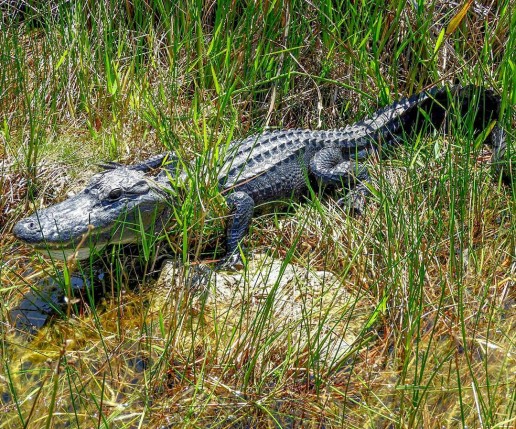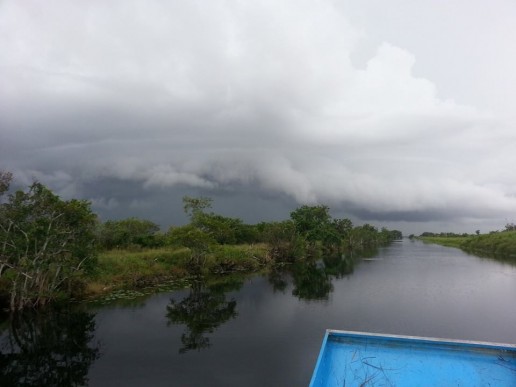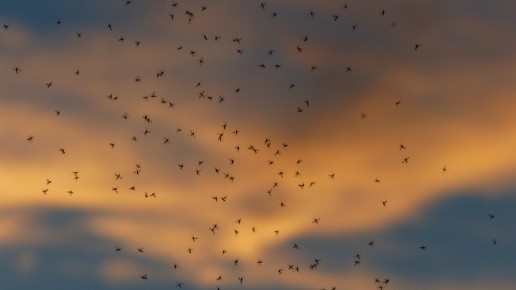Behold Florida's Beauty on an Everglades Eco tour
The Everglades is a mystery to people who may visit Florida, or have only just heard of it. It’s an ecosystem that is home to some of the most unique animal and plant life in the world. On an Everglades eco tour at Mack’s Fish Camp, you get to explore another world that’s hiding in plain sight.
Everglades Ecotourism
So, what is ecotourism? Ecotourism combines the adventure of exploring the beauty of nature with a raised awareness of it. Destinations like the Everglades, with its untouched ecosystem and high biodiversity, offer an experience that’s both fun and educational. Nature enthusiasts and adventurous families alike can expect a great time while learning its secrets. The Everglades has areas so remote that they can only be reached by an airboat, and have remained largely unchanged for centuries.
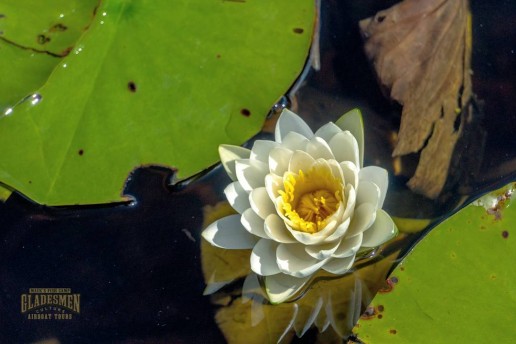
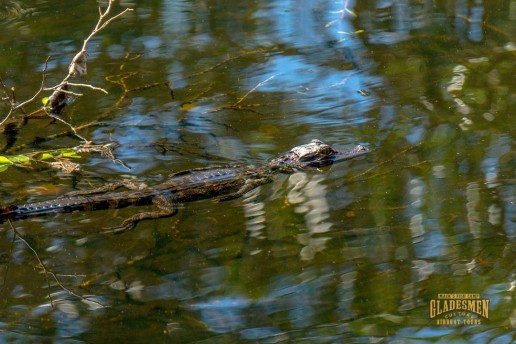
The Fragile Beauty of Florida’s Wetlands
As children we may learn that wetlands are the playground of ducks and frogs, not yet able to see their importance. Wetlands habitats are of vital importance to all life that thrives near it, and the Florida Everglades is no different. Many endangered animal species call it home, and it also provides drinking water to millions of South Florida residents.
Even though it’s an ecosystem fed by floods and shaped by fires year after year, the Everglades are remarkably fragile. In recent years, its protection and its restoration have grown as important issues to Floridians.
Unforgettable Adventure on an Everglades Eco Tour
Offering the chance to see and hear exotic bird species and observe the quiet power of wading alligators up close under an endless sky, the Florida Everglades is a feast for the senses. It is truly the defining natural attraction of Florida, as well as the legacy of the Gladesmen Culture here at Mack’s Fish Camp. If you’d like to take an Everglades eco tour with us or just want to experience an airboat ride in Miami, come on by.
Everglades Airboat Tours: A Relaxing Thrill Ride
The experience of visiting the Everglades couldn’t be more different from the busy cities near South Florida’s beaches. The latter can bring with it exciting sensory overload, while the former allows for easygoing relaxation. But Everglades airboat tours offer both a thrilling ride and the chance to explore a unique, beautiful ecosystem.
Airboats make getting there half the fun!
Built with powerful motors and a distinct design, airboats look like they’re flying over the marsh rather than on it. Racing airboats can reach speeds well over 100 miles per hour, yet most airboats operate most safely under 40 miles per hour. Our everglades airboat tours at Mack’s Fish Camp abide by this safety standard. But make no mistake, moving through this vast ecosystem on an airboat is a thrill like none other.
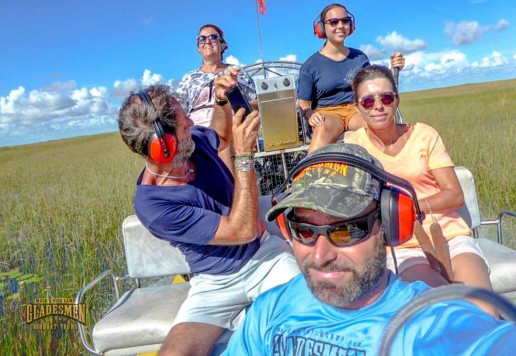
Airboats can go where motorboats can’t
The landscape of the Everglades has many areas with low water and thick vegetation, which are difficult for motorboats to navigate through. Airboats are flat-bottomed boats driven by a large propeller that sits above the water. This design doesn’t just allow them access to areas hidden beyond the sawgrass. The position of the propeller also prevents airboats from disturbing the plants or animals.
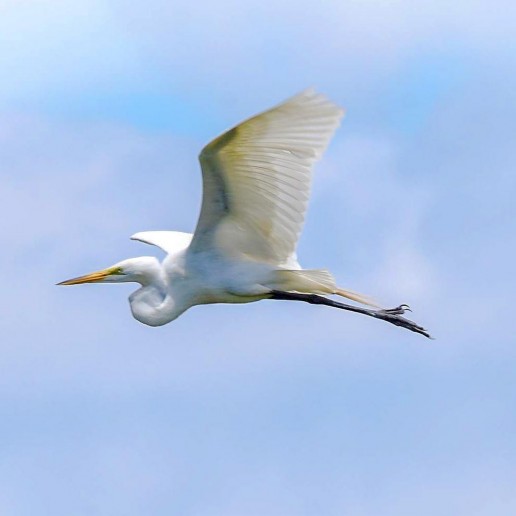
Relax as you discover the river of grass
Once the initial flight of your airboat ride slows, you’ll be surrounded by the natural beauty of the sloughs and marshes. Under an endless sky, miles from crowded intersections, you can appreciate the calm stillness of nature. You’ll hear and see many species of birds, including raptors like ospreys and colorful wading birds like herons. Not to mention you’ll see plenty of the icon of the Florida Everglades, the American alligator.
Apart from being the transportation standard of the Everglades, airboats provide an exciting way to venture deep into its many habitats. Everglades airboat tours give you the best of both worlds of Florida fun: rollercoaster thrills and the relaxation of nature. If you want to see for yourself or are just curious, then come and pay a visit to Mack’s Fish Camp.
Living with Alligators, A Florida History and How-To
To non-Floridians, the idea of living so close to alligators can sound exciting, scary or just plain wild. The novelty of it can bring unique challenges, too. But much like the endless summer weather, living with alligators is just part of life in Florida.
Alligators all over!
From marshes to rivers and swamps to lakes, alligators have resided throughout Florida for centuries. Spanish settlers & explorers in the 1600’s referred to them as el legarto (“the lizard”), and alligator became the English form of it. Alligators can be found in all 67 counties in Florida.
They’re solitary in nature, and tend to shy away from human contact. But as human populations grow steadily, the potential for interactions often occur. Alligators have been found in neighborhood lakes, backyards, garages, even swimming pools!
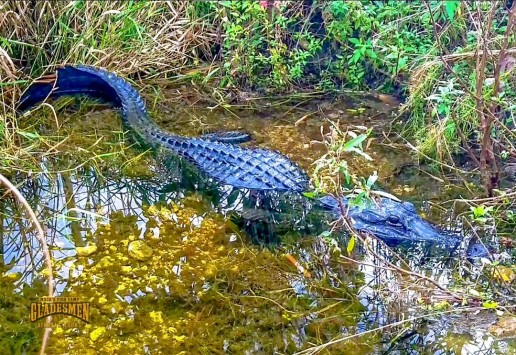
Should you encounter a gator that you believe could pose a nuisance to yourself, your pets, or property, you can call the Nusiance Alligator Hotline at 866-FWC-GATOR (866-392-4286). Alligators under four feet long generally aren’t considered to be a nuisance unless the caller believes it could be a threat. And also keep in mind that, nuisance alligators are killed, not relocated.
Some Alligator Safety Tips
Whether you’re a local living with alligators, or just looking to visit the Sunshine State, here’s some tips to be mindful of regarding gators.
- When camping or fishing, dispose of scraps in trash cans. Don’t discard them in the water, because you may be unintentionally feeding alligators.
- Never feed alligators. Doing so can make the associate people with food and become aggressive.
- Don’t swim outside of designated swimming areas or in waters that might be inhabited by alligators.
- If you’re bitten by an alligator, seek medical attention immediately. Serious infections can result if left untreated.
- And don’t bother alligators. Not only is harassing gators illegal, it can result in injury.
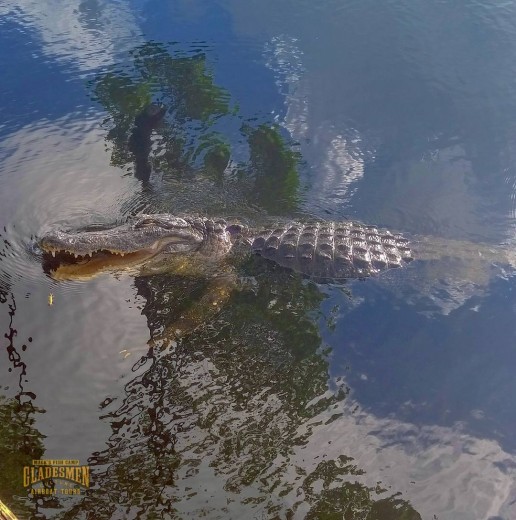
Alligators are a cherished member of not just the Everglades ecosystem, but the state of Florida as a whole. Living with alligators, they seem to pop almost anywhere in the state. But the best place to see them up close is in their natural habitat. Taking an Everglades airboat tour at Mack’s Fish Camp is a fun, safe way to learn about them and the role they place in the environment.
5 Everglades Fish You Can Encounter on a Fishing Charter
It’s no secret that South Florida is a haven for saltwater and freshwater fish alike. But, many people are surprised to find out that the River of Grass is flush with fish! Yes, the Florida Everglades has some of the best bass fishing in America. When you set off on our bass fishing guide service at Mack’s Fish Camp, there are many other fish you could see! Here’s some info on some species of Everglades fish.
Bowfin
A long, stout fish, bowfins are strong fighters, and have been known to snatch lures from unsuspecting anglers! They have long dorsal fins and rounded tailfins. At first glance, they can be mistaken for a bullseye snakehead fish.
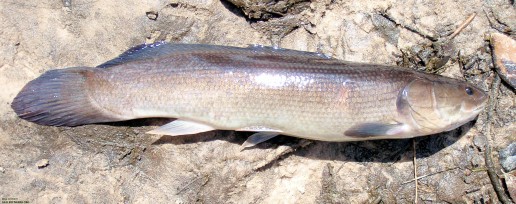
Largemouth Bass
The largemouth bass is the most popular game fish in North America. They’re also the state freshwater fish of Florida, and with good reason. These bass are found statewide, and are found near vegetation. A big catch for a largemouth bass in Florida starts around 24 inches long and weigh 8 pounds!
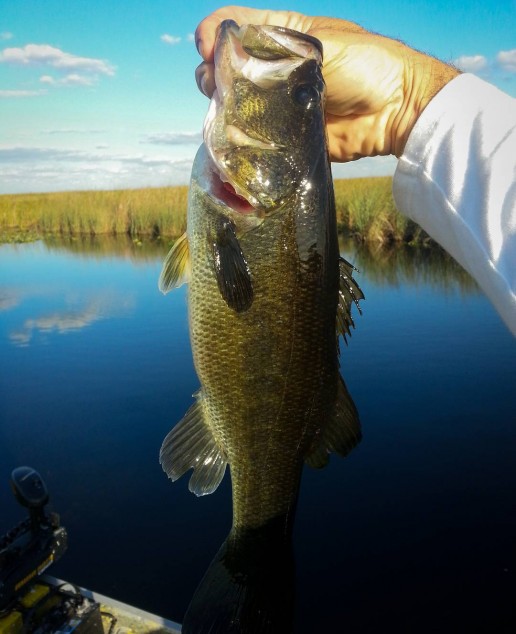
Florida Gar
This long, torpedo-shaped fish is generally not considered a game fish. But it’s aggressive eating habits can offer a good fight. Its long snout and thick, armored scales give the Florida Gar an almost prehistoric look. It also breathes through gills and an air bladder, and must surface periodically for air.
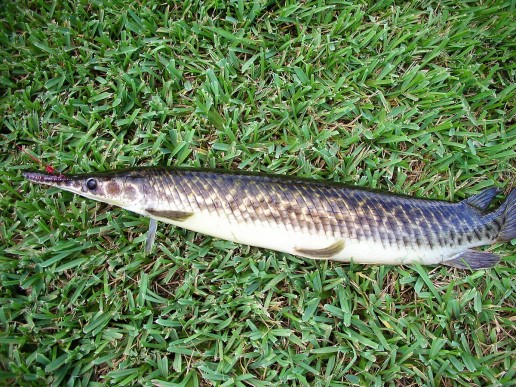
Channel Catfish
Identified by their whisker-like barbells and forked tail, channel catfish are the most –fished catfish species in America. They are a popular catch for food, and are attracted to strong odors. Shrimp or other commercial stink baits are recommended for them.
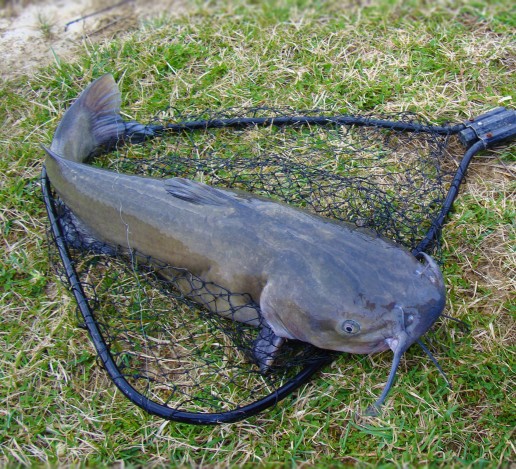
Tarpon
A very popular sport fish in South Florida, tarpon are found in both saltwater and freshwater habitats. When it’s not quite warm yet in during spring, tarpon are very abundant in the Everglades, especially the younger ones. They can grow quite large, weighing over 200 pounds!
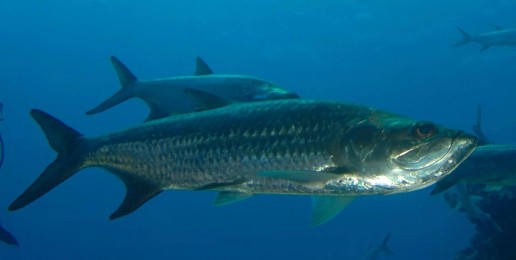
How weather conditions affect Everglades fish
The Everglades dry season (December though April) often leads to extended periods of drought, and lower water levels. While this can concentrate fish in gator holes, sloughs, and canals, it leaves them exposed to predators in marshes. Their numbers are replenished and more abundant during the flooding of the Everglades wet season, though much less concentrated.
The fish in the Everglades are vital to this ecosystem. They are a primary food source for alligators, birds, and larger fish. Fish also help manage Everglades insect populations. Whether you explore on our bass guide service or just take an Everglades tour on an airboat, you’re sure to see plenty of them!
Experience Summer Adventure Year-Round in the Florida Everglades
There are plenty of reasons why South Florida is a popular travel destination. The gorgeous beaches and lively nightlife make visitors balk at the theme parks just over the horizon. A big factor for many tourists is the abundance of warm, sunny weather that seems to last all year. There’s only one experience in South Florida that’s as unique as the climate here: taking an Everglades tour!
Seasons in the Everglades
It definitely feels like summer in Florida for most of the year. But, the Everglades doesn’t really have a summer, or even four distinct seasons, just two! There is the wet season, which lasts from May through November, and the dry season, lasting from December through May. During the Everglades wet season, the Florida wetlands are replenished by heavy rains, and alligators nest and hatch their young. The dry season is defined by little rainfall, and peak activity of several species of Everglades birds like herons and egrets.
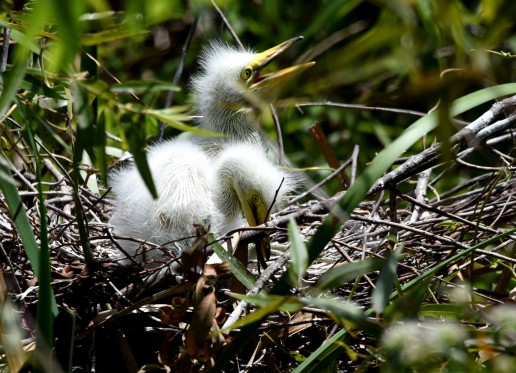
When is the Best time to Visit the Everglades?
The best time to take an Everglades tour can be a matter of preference. The dry season offers cooler temperatures, and the lower water levels and bird nesting concentrate Everglades wildlife into smaller areas. But many tourists visit South Florida at this time, and it gets very busy. During the wet season there are fewer crowds, but also higher temperatures and frequent rain.
Despite there being only two seasons in the Everglades, there are transition periods between them. Starting in October, a noticeable shift starts to occur, the rains become less frequent, and the heat is less intense. Also, a decrease in humidity brings a decrease in pesky, biting mosquitoes!
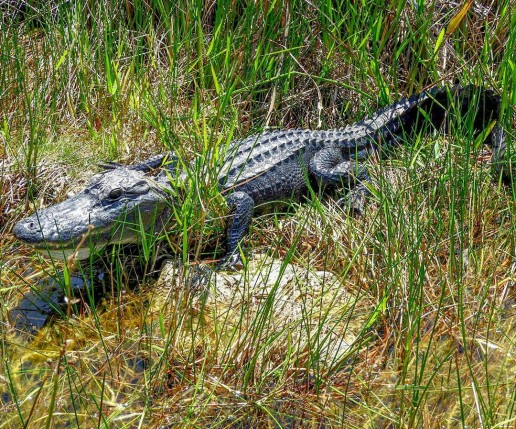
The Everglades wet season can get too hot for some, and the dry season can bring too many people. But, maybe there’s a time of year that’s just right for you. Miami in the fall doesn’t see the leaves changing colors, but the license plates start to! So before the holidays take a bite out of your budget, and snowbirds start arriving from across America and beyond, consider taking an Everglades tour in Miami this fall at Mack’s Fish Camp.
5 (Debunked) Alligator Myths
Of all the many animals that live in the Florida Everglades, none are as iconic as the American alligator. Second only to the nesting wading birds of the dry season, alligators are the most popular species of Everglades wildlife. You can learn much about them on alligator tours at Mack’s Fish Camp. But for now, we’d like to clear up a few alligator myths.
Myth #1 – Alligators are slow
Alligators are mostly seen as either floating in water, laying about, or casually walking across a gold course. But, don’t be fooled. Because alligators are ambush predators, they rely on quick bursts of speed to catch their prey. Though not fast, alligators are capable of moving at 10-15 miles per hour from a standing position. In the water, they can swim nearly twice as fast because of their muscular tails!
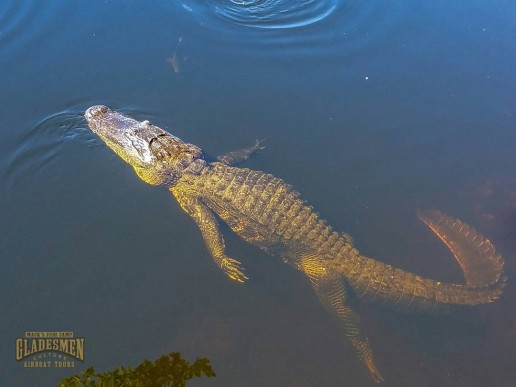
Myth # 2 – Alligators are at the top of the Everglades Food Web
While they definitely close to it, the American alligator doesn’t sit at the top of the Everglades food web. The Burmese python, an exotic invasive species, is now the apex predator of the Everglades, and preys on alligators. Of the alligator myths listed, we wish this one was true, as Burmese pythons have become a significant threat to Everglades wildlife.
Myth # 3 – Alligators are vicious
Intimidating as they look, alligators aren’t bloodthirsty. Their cousins the crocodile, particularly Nile crocodiles, are known as aggressive potential man-eaters. Alligators are quite shy, and try to avoid humans. But, they can become aggressive if you’re near their nest, or if they have been fed by people. Feeding alligators makes them associate people with food, so if you encounter a wild alligator, don’t feed it!
Myth # 4 – Gators can’t climb
Again, that seemingly lazy log with eyes shouldn’t be underestimated. Young alligators are more agile, but adult alligators are very strong and muscular. Adult alligators rely on a combination of their sharp claws and long tails to climb trees and even fences! They can use this ability to pursue prey up trees, though they prefer to “work smart, not hard” and wait under the tree.
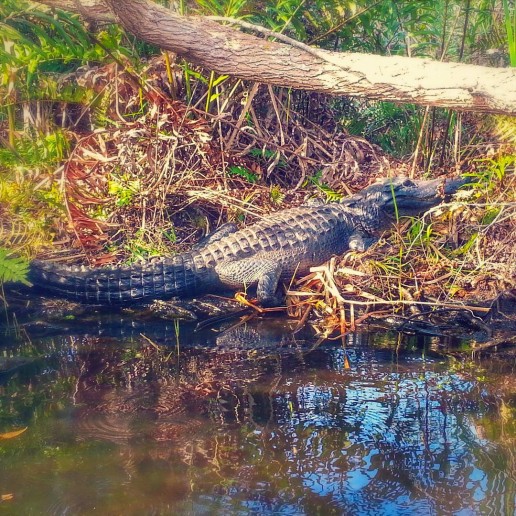
Myth # 5 – Alligators can’t survive without warm weather
Alligators are reptiles, and not only are they cold-blooded, they can’t regulate their body temperature on their own. The Florida Everglades is perfect for them, because alligators thrive in temperatures between 82 and 92 degrees. However, every so often the Everglades is within reach of cold winter weather, but alligators are ready for it. When faced with temperatures of 55 degrees or lower, alligators go into a dormant state, slowing their heartbeat to 1 to 2 beats per minute!
Alligators are amazing and powerful creatures, so it’s easy to fall victim to some of these alligator myths. But with a good balance of curiosity and skepticism, you can discover the truth about these awesome animals. The alligator tours at Mack’s Fish Camp let you see them up close in their natural habitat. You’ll also learn more about alligators and also the Everglades ecosystem from Florida Gladesmen that have lived alongside them for generations.
Hurricane Irma Update
Just two weeks ago, much of Florida witnessed the power of mother nature when Hurricane Irma made its landfall. Despite being spared the widespread devastation seen by the Florida Keys, South Florida took its licks, too. However, Mack’s Fish Camp is still standing!
As of this past weekend, we finally have power back, but have still been offering airboat rides during the outage. Not only were we still standing, but up and running as well. That’s right, we have still been running private airboat tours and offering our bass fishing guide service in the Everglades. In fact, our airboats have made for formidable leaf blowers, helping us with clearing much of the foliage.
Like much of South Florida, our trees sustained the heaviest damage. But our old structures are still intact, including our home, for which we are very grateful. Looking at the devastation experienced by people in Texas and the Keys, we feel blessed to still have our home and each other.
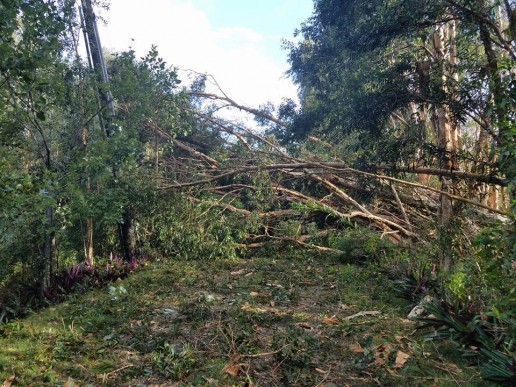
No storm can take down Gladesmen Culture
As a family of Gladesmen, we thrive in times like these through our toughness, tenacity, and a bond that no wind can uproot! But as a small, family-owned business, Mack’s has stayed alive through word-of-mouth, and we sure could use some now.
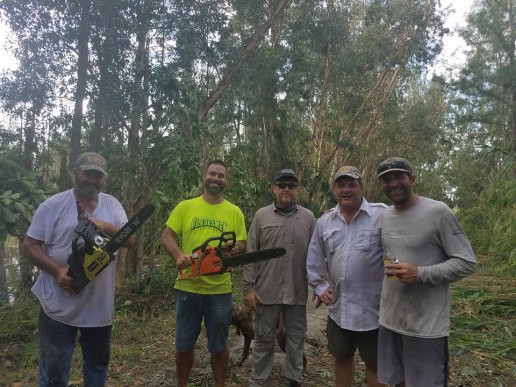
We took a hit with this storm. So, now we’re looking to you: our friends, family, and fans, to spread the word about this little piece of heaven we call home. Recommend us to a friend who’s never seen the Everglades, or bring them out here with you for an airboat ride.
Or even if you’re just curious to see the result of the awesome power of nature against its otherwise calm beauty, come pay us a visit. Rest assured that as long as the Florida Everglades are around, you can bet us Gladesmen will be, too!
Wildlife Profile: Spiders in the Everglades
Spiders probably aren’t the first animal that comes to mind when you think of the Florida Everglades. But they are among the most abundant of Everglades wildlife, with 20,000 spiders for each of the 2 million acres here. Most of them go about their business unseen, and many are too small to be seen!
Spiders in the Everglades can be found hiding in the underbrush or are easily spotted by the webs they make in trees. Spiders are arachnids, not insects, so they all have eight legs instead of six, no antennae, and their bodies are divided into segments.
As scary as they look to some people, most spiders aren’t a threat to us, and only some are venomous. In fact, spiders are a cherished part of the Everglades food web, feeding on nuisance insects. Here are some species of spider you may spot on an Everglades tour at Mack’s Fish Camp.
Banana Spiders
Banana spiders are the species you’re most likely to see when you visit the Everglades. While the males are smaller and more dark-colored, the more colorful females measure three inches long, and are among the biggest spiders in North America.
These spiders are a type of orbweaver, and spin large circular webs to catch prey. A female’s web is made of golden silk similar to its color, and is three feet long. They feed on insects of all sizes, from mosquitoes to dragonflies. Banana spiders aren’t aggressive, and their bite isn’t harmful to humans.
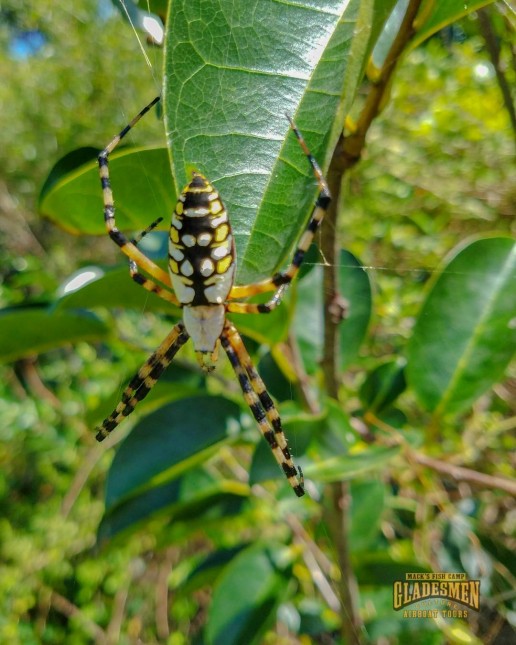
Fishing Spider (dolomedes triton)
This aquatic spider species spends nearly all of its time floating on or near water. In fact, fishing spiders can walk on the water’s surface and even dive underwater to catch prey. They hunt insects, tadpoles, even fish by sensing vibrations in the water, and then eat on dry land. Fishing spiders are dark gray to brown-colored, with two pale lines running the length of their bodies. Because the Everglades is a mostly aquatic ecosystem, fishing spiders are right at home in the sawgrass marshes and wet prairies.
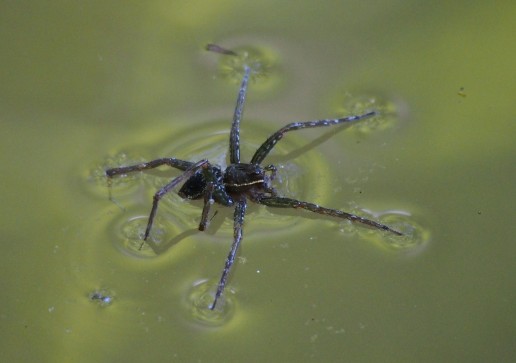
Red Widow
The red widow spider is a venomous spider with an orange-red body and a black abdomen with red spots. They’re fairly large, reaching 1.5 inches in length. Unlike its cousin, the black widow, it hasn’t been known to have ever bitten a person. However, they are known to have very potent venom. Red widows are endemic to Florida, found in the pine scrubs and pine rocklands. They make their nests in saw and scrub palmetto plants, and feed on large insects like crickets.
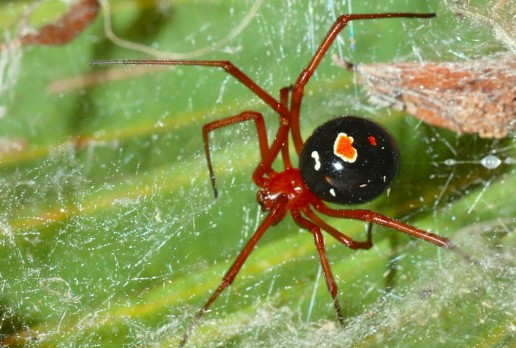
Brown Recluse
The brown recluse is one of the most venomous spiders in the Everglades, with venom as strong as the black widow’s. These quarter-sized arachnids not only make their webs, but seek out prey on the ground, such as cockroaches. Brown recluse spiders are not aggressive, and reports of them biting humans are rare. But they will bite if pressed up against someone’s skin, by leaning into one or when putting on clothing. Although, the strength of their bite varies, it can cause skin damage, loss of limb, and death.
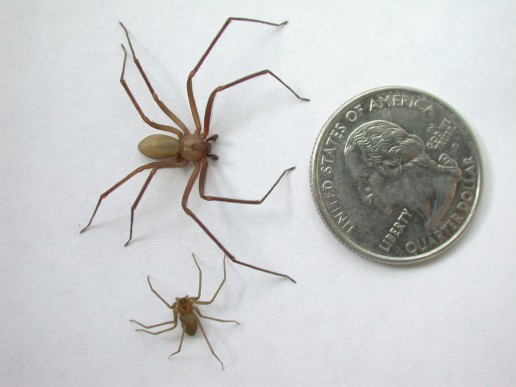
Crab Spiders
These small spiders are named for how they move by scuttling sideways, as a crab would. Most species are dark grey to black to camouflage themselves. Other species are brightly colored to hide inside flowers, wait to ambush their prey. Crab spiders do not spin webs to catch or wrap their prey, but feed immediately after attacking.
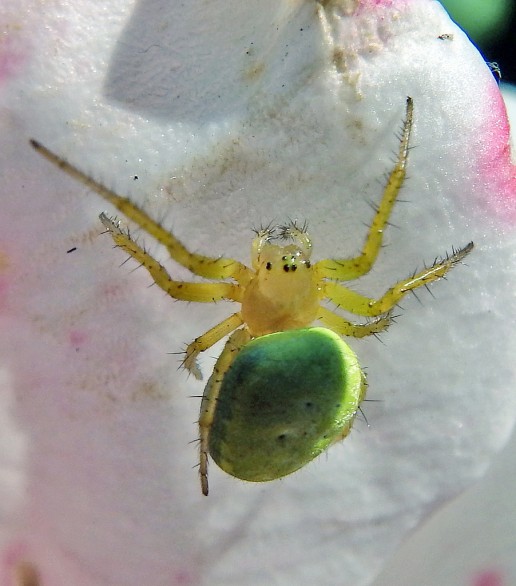
Spot Everglades Wildlife on an Airboat Ride
Spiders in the Everglades serve their role in this ecosystem, no matter how frightening of beautiful you might find them. On a private airboat tour at Mack’s Fish Camp, you’ll get to see them and many other Everglades wildlife species.
5 Ways Hurricanes Can Affect Everglades Wildlife
The arrival of September means the beginning of the end of summer. But for Florida, and several other southern states, it signifies the peak of Atlantic Hurricane season. Hurricane season lasts from June 1st until December 1st, with the most activity usually occurring between late August and mid-October.
Because Florida is a narrow peninsula, The Everglades can feel the effects of a direct hit by a hurricane. Unfortunately, the Everglades wildlife and ecosystem can feel the brunt of the storm as strongly as humans can.
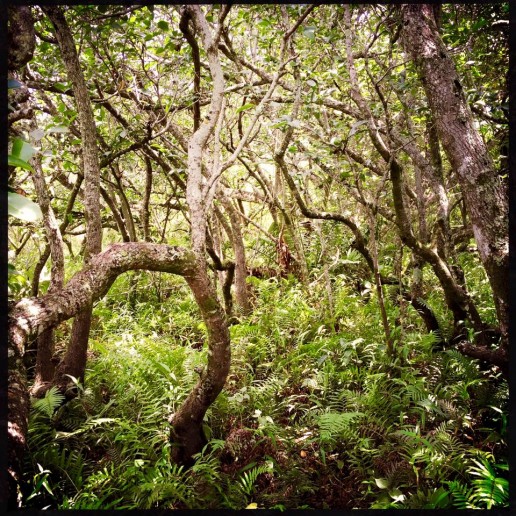
Heavy Rains Can Cause Freshwater Floods
Large amounts of rainfall from hurricanes can flood river basins near coastal areas. The excess water carried along these watersheds could surge into saltwater estuaries. This can offset the balance of saltwater and freshwater, and hurt the ecosystem of the coastal Everglades habitat.
Saltwater Intrusion Caused by Storm Surge
Hurricane winds can be so strong that they cause coastal water to surge far past the shoreline. Along with the flooding damage, the saltwater carried inland can harm freshwater wetland areas. Plants and animals aren’t as salt-tolerant in freshwater marshes and estuaries, and can suffer damage if the seawater doesn’t drain quickly.
High Windspeeds Can Destroy Tree Habitats
Everglades wildlife have specific niches in the diverse habitats here. Powerful hurricane winds can damage hammocks and forests, which not only destroys the animals’ homes, but their food as well. The potent wind gusts can strip berries and nuts from trees.
Storm Winds Can Dislocate Wildlife
The powerful wind fields contained in hurricanes can push birds hundreds of miles off course and far away from their habitats. Some birds get trapped inside the eye of these tropical cyclones, and held there by the extreme winds until it dissipates. Marine mammals like manatees can be blown onshore, too.
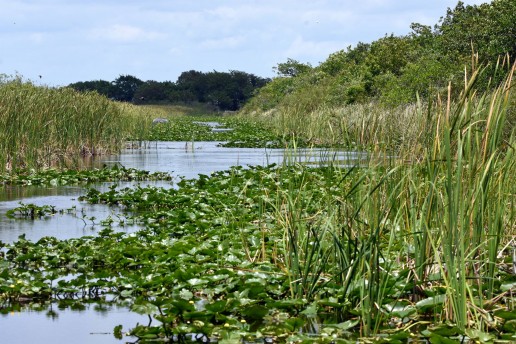
Rough Seas and Storm Winds Harm Marine Wildlife
Storm surge, combined with the rough seas caused by strong winds, are a direct threat to aquatic life. In 1992, Hurricane Andrew killed 182 million fish in the Everglades basin, and nearly 10 million more fish in the waters offshore of Louisiana.
As harsh as Mother Nature can seem to the creatures that live in the Florida Everglades. But, understand that these animals were here long before people, and have adapted to endure all kinds of peril. Taking an airboat eco tour lets you see the varieties of Everglades wildlife that thrive here, much like the tradition of Gladesmen Culture that has been here for generations.
Colorful and Creepy Crawly: Everglades Insects
They can crawl, fly and even swim. Some of them look strange, some of them beautiful, and there is a variety of Everglades insects you’ll see when you visit Mack’s Fish Camp in South Florida.
While there are large animals in the Everglades that are better known, like the American alligator and the manatee, we can’t overlook these little guys. Insects play a big role in the Everglades ecosystem, which stretches over many different habitats.
As a link in the Everglades food web, insects are not only a food source for fish, reptiles and amphibians. They also act as pest control for Everglades plants by eating other insects as well as helping with pollination.
Butterflies
There are nearly 100 different butterfly species in the Florida Everglades, a diversity as incredible as their many patterns and colors. Most butterflies are diurnal, so they’re easily spotted during the daytime. Butterflies are very mobile, choosing where they live based upon available resources.
Some species prefer specific types of host plants to rest in, like the ruddy daggerwing. It prefers strangler figs, wild banyan trees, and common figs or their host plants.
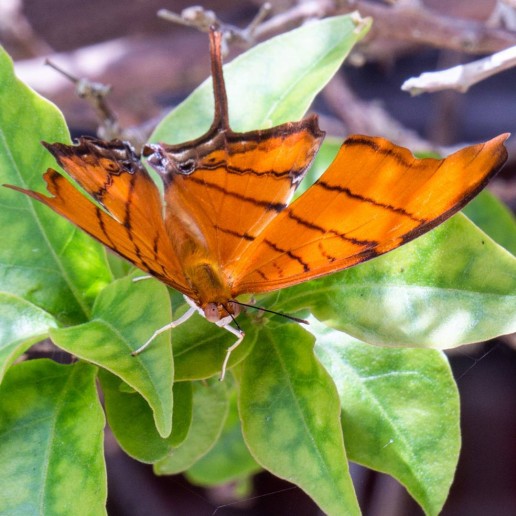
Whirligig Beetles
While you’re on an airboat ride at Mack’s Fish Camp, you might notice what looks like bubbles zipping around in circles on the water. They’re actually whirligig beetles, aquatic insects that dwell on water surfaces.
Whirligig beetles have divided eyes that can see above and under the water at the same time! If threatened, they can dive underwater and stay submerged because of a small air bubble they trap between themselves and the surface.
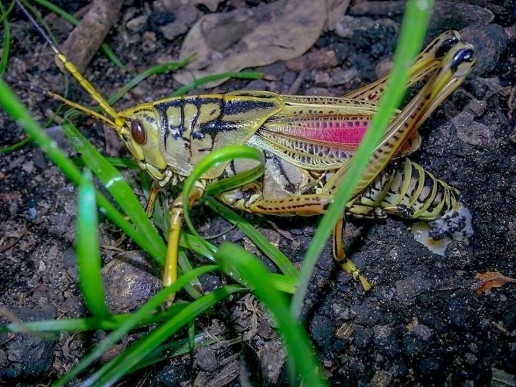
Lubber Grasshoppers
Proof that not all colorful Everglades insects move gracefully through the air, the lubber grasshopper is easy to spot. They sport bright greens and yellows with hints of red, and grow up to 3 inches in length. Lubber grasshoppers get around by jumping and walking, but they’re not very quick. So, you could easily snap a good picture of one should it cross your path.
You might think the lubber grasshopper is an easy target for predators, given its bright colors and slow movement. But, they are very toxic to eat and their vivid colors act as a warning to discourage anything from trying!
Mosquitoes
The most well-known, and infamous of Everglades insects is the mosquito. Despite being a pest to humans, they are arguably the most important insect in the Everglades food web.
By laying their eggs and dwelling near water, mosquitoes are a vital food source to fish, frogs, lizards, and other insects. They are most abundant during the wet season, but their numbers drop sharply in the cool, dry winter months.
They may not be the first sort of Everglades wildlife you hope to see when you visit the River of Grass. But, insects are as much a part of Everglades ecosystems as egrets and alligators. Even if creepy crawlies aren’t your thing, they can still be a pretty sight to behold!

